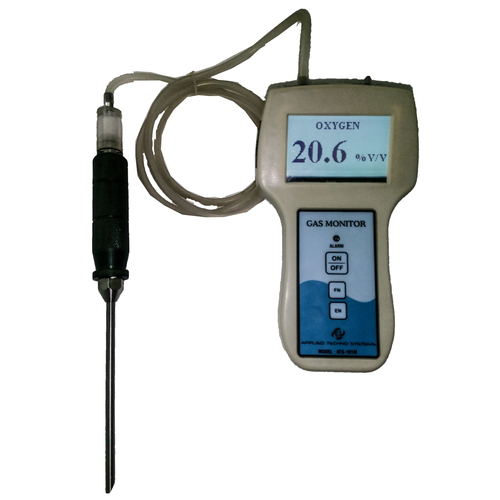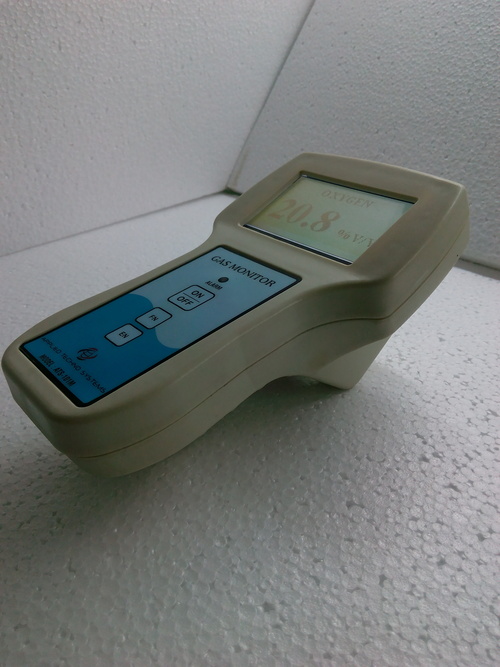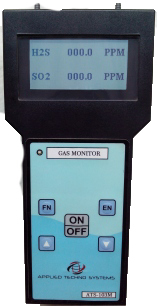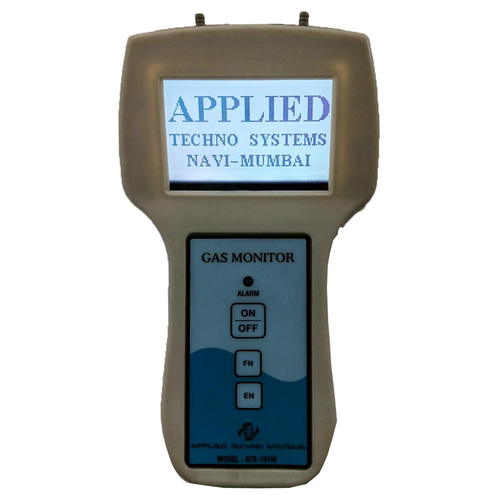- Dew Point Meters
- Gas Analysers
- Portable Gas Detector
- Moisture And Dew Point Analyzer
- Dust/Opacity Monitor
- Gas Monitoring Systems
- Gas Leak Detectors
- Gas Transmitters
- VOC Leak Detector
- Air Quality Monitoring System
- Online Continuous Emission Monitoring System-OCEMS
- Dew Point Monitors
- Gas Detector
- Opacity Monitor
- Portable Flue Gas Analyzer
- Online SOX & NOX Gas Analyzer
- Methane Gas Leak Detector
- Hydrogen Purity Analyzer
- Gas Purity Analyzer
- Effluent Monitoring Systems
- Producer Gas Analyzer
- Gas Detector Calibration Service
- Portable Gas Monitors
- Gas Sensor Transmitter
Combustible Gas Detectors
Price 32500 INR/ Pack
MOQ : 1 Pack
Combustible Gas Detectors Specification
- Material
- ABS plastic
- Humidity
- < 85% RH
- Usage
- Industrial
- Power Supply
- Built in Lithium Rechargeable battery
- Temperature
- 15 Celsius (oC)
- Type
- Electronic
Combustible Gas Detectors Trade Information
- Minimum Order Quantity
- 1 Pack
- Payment Terms
- Telegraphic Transfer (T/T)
- Supply Ability
- 25 Packs Per Week
- Delivery Time
- 1-2 Week
- Sample Policy
- Within a certain price range free samples are available
- Packaging Details
- Normal Packing With Thermocol
- Main Export Market(s)
- Asia, Australia, Central America, North America, South America, Eastern Europe, Western Europe, Middle East, Africa
- Main Domestic Market
- All India
About Combustible Gas Detectors
Mixtures of gases and air can be burnt at a wide range of concentrations. In each case, there is a specified minimum concentration above which an ignition source will cause an explosion or flame front propagation. In this case, the Lower Explosive Limit (LEL) of that gas or vapor applies. It is sometimes referred to as the Lower Flammable Limit (LFL). The LEL varies from gas to gas. The minimum concentration of CHC in the air by volume typically ranges from 0.5% to 15%. Based on the system, this concentration is equal to 100%. Combustible gases can be lighter or heavier than air. Prior to monitoring the gas or entering an area containing it, determine the characteristics of the gas. A typical low alarm setting is 20% LEL, a high alarm is 40% LEL, and a high-high alarm is 60% LEL. It is up to the user to decide what setting is appropriate.
Infrared or catalytic bead technology:
Catalytic gas detectors are more reliable in dusty and dirty environments since they are less sensitive to the presence of industrial contaminants. They also perform more reliably under high temperatures, are not affected by pressure changes or humidity changes. All catalytic sensors can detect most combustible hydrocarbons, including hydrogen, which is invisible to infrared. Hydrogen has a smaller footprint than infrared.
Calilbration Gas Selection for Combustible Gas Detectors
Calibration does not always need to be done with the gas that most likely to be present. For most applications, the standard calibration gases give excellent results. A calibration kit can be used for any combustible gas. We can recommend the gas to be used and provide instructions for calibration.
Advanced Gas Detection for Industrial Safety
Our combustible gas detector leverages electronic sensing technology to quickly identify hazardous gases in industrial environments. Its lightweight design and tough ABS plastic housing ensure long-lasting performance and maneuverability. With a built-in lithium rechargeable battery, this device delivers extended operation, making it ideal for workspaces that prioritize safety and efficiency.
Designed for Versatile Industrial Applications
Operating at 15C and withstanding up to 85% relative humidity, this detector suits a wide range of industrial processes. It supports businesses seeking reliable safety measures, and can be seamlessly integrated into existing safety protocols. The detector is suited for exporters, importers, manufacturers, service providers, and suppliers throughout India.
FAQs of Combustible Gas Detectors:
Q: How does the combustible gas detector operate in an industrial environment?
A: This detector uses electronic sensors to identify the presence of combustible gases in industrial settings. It continuously monitors the air and alerts operators when hazardous levels are detected, ensuring quick response to potential dangers.Q: What types of gases can this detector identify, and what is its primary usage?
A: This detector is engineered to sense various combustible gases typically found in industrial facilities. Its primary usage is for early detection to prevent accidents and ensure workplace safety.Q: When is the best time to use the gas detector during your industrial process?
A: For maximum effectiveness, use the detector during all operational hours, especially when handling or storing combustible gases, or during equipment maintenance, to continuously monitor for leaks.Q: Where can this gas detector be installed for optimal performance?
A: Install the detector near areas prone to gas leaks, such as storage tanks, pipelines, and processing units, or in confined spaces where gas accumulation is possible.Q: What is the process for recharging the built-in lithium battery?
A: The built-in lithium rechargeable battery can be recharged using a compatible charger provided with the device. Simply connect the charger to the detector and a power outlet until the device indicates a full charge.Q: How should the device be maintained to ensure long-term reliability?
A: Regularly clean the ABS plastic housing, test sensor calibration as per manufacturer guidelines, and ensure the battery remains charged for consistent and uninterrupted operation.Q: What are the main benefits of using this gas detector in your facility?
A: By providing early detection of hazardous gases, this device minimizes the risk of accidents, enhances workplace safety, and supports regulatory compliance, making it a valuable investment for any industrial facility.
Tell us about your requirement

Price:
Quantity
Select Unit
- 50
- 100
- 200
- 250
- 500
- 1000+
Additional detail
Mobile number
Email
More Products in Portable Gas Detector Category
LEL Gas Monitor
Price 21300 INR / Pack
Minimum Order Quantity : 1 Pack
Usage : Gas Leak Detection
Humidity : 95%
Temperature : 15 Celsius (oC)
Color : Grey
Toxic Gas Detector
Price 68500 INR / Set
Minimum Order Quantity : 1 Set
Usage : Industrial
Humidity : 095 % RH
Temperature : 5 to 55 Celsius (oC)
Color : Black
Chlorine Gas Leak Monitor
Price 26500 INR / Set
Minimum Order Quantity : 1 Set
Usage : Industrial
Humidity : 15 to 95 RH
Temperature : 15 Celsius (oC)
Color : White
Industrial Oxygen Monitor
Price 18500 INR / Pack
Minimum Order Quantity : 1 Pack
Usage : Industrial
Humidity : < 85% RH
Temperature : 5 to 55 Celsius (oC)
Color : grey

 Send Inquiry
Send Inquiry





 English
English Spanish
Spanish French
French German
German Italian
Italian Chinese (Simplified)
Chinese (Simplified) Japanese
Japanese Korean
Korean Arabic
Arabic Portuguese
Portuguese